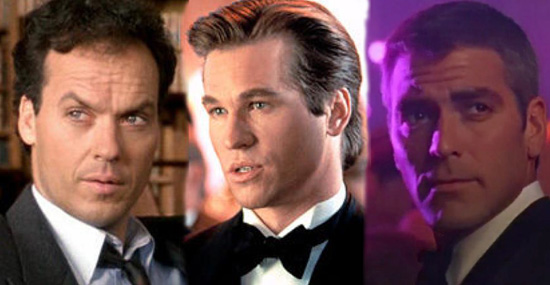Monthly Archives: March 2014
A few weeks ago I was listening to Robert Ludlum’s book Trevayne, which was originally published under a pseudonym because the conventional wisdom at the time was that people wouldn’t accept more than one novel a year by an individual.
Ludlum is dead now, and now, as with James Patterson and Tom Clancy, they’re putting his name on books that he didn’t write.
The notion that not only should we have to wait a year for each novel by a particular author but that this is a good thing has fallen by the wayside.
And why not? There is something to be said for novels franchising out and producing as much content and as many variations as the market will bear. Combine this with the Patterson model and there are tremendous opportunities.
It also has artistic advantages. As future installments can be planned in advance, it’s easier for storytellers to play the long game with storylines and ideas. Even better, it can add a degree of reassurance to the reader that the story will, in fact, end. Combine this with franchising and it opens up worlds of possibilities.
My creative project has me looking into our solar system and terraforming. Along the way, to help me visualize things, I have run across multiple animations of our solar system at work as well as found some interesting resources on terraforming.
The first one is from Dynamic Diagrams (or try this) and is by far the most interesting (warning, if you’re at work turn off your speakers before going there). It’s by far the best done visually insofar as it looks pretty cool. Lain absolutely loves it. She’s transfixed by the planets spinning round and round. She likes to point at the moon on the lower left hand part. She’s also used to tablets where she can make things move with her fingers, so she tries to “catch” the planets to manipulate them. It has very limited options. You can either watch the planets go around the sun or use the old Earth-as-the-center model and watch the planets (and the sun) go around us. You can also speed up or slow down (or reverse) the process.
The second one, Solar System Scope, was actually more useful for my purposes because it showed the dwarf planets and their orbits that deviate from the elliptical plane. It also gives a better idea of the sorts of distances between planets we’re talking about. Though less pretty, it actually gave me more of the visualization that I needed. There are a lot of options. You can zoom in and out, change perspective, make the planets large or realistically proportioned, and add and remove orbits, object names, and so on. You can also, like the other one, speed things up and slow them down. You can also click on a planet and get more.
The third one, Solar System Visualizer, is the only one that includes Pluto as a planet. Either because it’s outdated or because they are conscientious objectors. The options are limited here to zooming in and out. For my interest in the non-planetary items it was pretty good. Specifically around the asteroid belt which the Scope more or less ignores.
The story I am drafting up in my mind involves the Solar System being terraformed by oddly benign aliens. They’re refugees from intergalactic wars and mostly want to settle on some place really far out of the way. Having had their own planets decimated, they actually (as far as we know) have little in the way of designs on us. They basically set up shop and start terraforming everything in site. This was supposed to be an oh-by-the-way aspect of the story, but it turns out there is a lot of information out there about terraforming and a lot of things to consider.
This is the most direct source with descriptions of the possibilities and what would be required in English that I can understand. I’m also using Wikipedia’s entry on rounded orbital objects to help me figure out where to look (since there are planets with 60+ moons, I can’t just up “moons”). Wikipedia’s entry on terraforming itself was interesting.
The corruption and fraud surrounding the EU is said to be breathtaking.
A number of conservatives and anti-immigration sorts have made some hay over Switzerland’s decision to restrict immigration. It’s worth pointing out, though, that the immigrants they are restricting are more of our H1B variety (except European, if that matters) than the immigrants they spend the most time complaining about here.
How Swedish tax policy lead to Abba’s flamboyant outfits. (via Vikram Bath)
Wikipedia: Lottery mathematics
As the fiscal outlook of states improves, states are trying to figure out what to do with the money.
According to The Nation, feminism is undergoing some toxic Twitter wars.
If gun control advocates want people to believe that gun registration will not lead to gun confiscation, they should take care that gun registration doesn’t lead to gun confiscation.
Pentecostalism is spreading among the immigrants. This sort of thing could, ultimately, be how the GOP improves its share of the Hispanic vote (over time). Hispanic protestants tend more towards the GOP than Hispanic Catholics.
South Korea is building a 364-foot statue of Voltar the Invincible to go in their Robot Land theme park because why now?
What a neat idea: using remote controlled robots to let people look at museum art after hours.
Robots saved Pittsburgh.
Will Doc Shock become a thing? People don’t like narrow networks, but they could be a crucial to cost control. Truly, the enemy of true health care reform is us.
There is just tons and tons of information in this New York Times article about action movie actors. Heck, just in these two paragraphs alone:
Once upon a time, a movie poster needed to have only two words on it: the star’s last name and the title. Stallone: Rambo. Schwarzenegger: Terminator. In the new action-hero economy, though, actors rarely carry the franchise; more often, the franchise carries the actor. Chris Hemsworth was little known before “Thor,” and no one outside the industry was too familiar with Henry Cavill before “Man of Steel.” Lorenzo di Bonaventura, who produced “Transformers” and this winter’s “Jack Ryan: Shadow Recruit,” told me that studios were gambling on unproven actors for economic reasons. “These movies cost a lot to mount. Adding on the big movie star’s salary is the thing that makes you go, ‘Boy, I don’t know if I can afford it.’ ” Perhaps no movie typifies this model better than the 2006 mega-hit “300,” an adaptation of Frank Miller’s popular comic-book series, which featured inexpensive and little-known actors like Gerard Butler and Michael Fassbender and then catapulted them to stardom. This week, the film’s producers are trying to replicate that success with a sequel, “300: Rise of an Empire,” which is anchored by the unheralded Sullivan Stapleton and 299 other equally fit, anonymous men in leather skirts.
There are now more indistinguishable, barrel-chested, eight-packed aspiring stars than ever, and they’re all hoping to become the next Hemsworth or Cavill. Nikki Finke, the former editor of Deadline.com, describes the modern casting process as a “bake-off.” “They’re looking at seven actors. You’ve heard of two of them. . . . They all have names like Joe and Josh. It’s impossible to keep them straight.” The longtime action-movie producer Avi Lerner said: “Every day I get phone calls from two or three agents in big Hollywood agencies. They’re always telling me about some new client that is going to be the next Tom Cruise. One in a hundred becomes a movie star.” And the competition is only getting tougher. “There’s going to be an implosion,” Steven Spielberg warned last spring at the University of Southern California’s School of Cinematic Arts, “where three or four or maybe even a half-dozen megabudget movies are going to go crashing into the ground, and that’s going to change the paradigm.” By the summer, that crash already seemed to be happening: “R.I.P.D.” and “Turbo” bombed, joining other megabudget flops like “After Earth,” “White House Down” and “Pacific Rim.” “The Lone Ranger,” for which Disney paid an estimated $375 million, made less than $261 million worldwide. “Eight years ago, there were roughly 150 wide-release movies,” says Mark Gill, the president of Millennium Films. “Last year, there were 115. My prediction is that it will be down to 50 in the next couple years. And there will be fewer tent poles.”
I remember when they were searching for the next Superman, a couple of aborted Superman attempts ago, that I thought to myself that a Superman movie can make a star out of anybody good. Why waste money buying someone who is already a star?
Casting is actually across the board with stars and relative unknowns becoming the big heroes. The next Batman is Ben Affleck, after all, starring alongside the previously anonymous Cavill. Each case is different, though you would actually sort of expect there to be a pattern of some sort. The juxtoposition of Affleck and Cavill, playing two of the most well-known of superheroes, pretty much says it all. Then second-tier heroes like Thor are also given unknowns like Hemsworth next to Edward Norton as the Hulk. It seems to me the smartest casting goes on the basis “The bigger the character, the smaller the actor.” You might need Downey to sell Iron Man, but you don’t need Affleck (or even Bale) to sell Batman[1].
I would suggest that this works beyond superheroes, too. The cited Conan failure was a miscalculation, in my view, of the value of the Conan property. Ahnold was the star there and not the character and they needed a bigger star to play that role. That doesn’t mean that recasting or taking a chance on an unknown is a bad idea, but expectations (and overall budgets) should be adjusted accordingly. The article mentions rebooting[2] Transporter without Jason Statham. It was Statham that made the series, but if the plan is basically for a Redbox release, that’s probably not a bad idea. Fast & Furious survived Vin Diesel’s (temporary, it turned out) exit, so you never know. Just don’t bet the farm on it.
The overall picture presented of the movie industry is somewhat depressing. Predictable, but depressing. I like my superhero movies and movies based on properties I am interested in, though there is such a thing as excessive caution and I Hollywood seems to be reaching that point. Actors fees themselves have played a role, as the more a movie spends the more cautious they need to be. The movie industry is facing more competition than ever, from everything ranging from television to piracy to (it seems to me) more movies than ever being made. That seems likely to perpetuate the “Go big or go pretty small” model I have been predicting (though hasn’t come to fruition… yet).
[1] It seems odd to me when they surround an actor with bigger stars. A nobody playing Superman, but recognizable actors below the headline. Bale playing Batman, but Morgan Freeman as Lucius Fox. I suppose that does make some economic sense because getting Freeman to play a smaller part does put the movie on some radars. I suppose I just haven’t gotten used to it yet.
[2] I would consider the replacing of actors to be a more positive development if it were used differently. I think they ought to make some of these superhero movies with ten films in mind. I’d always assumed the hold-up was the increasing cost of actors and an unwillingness to replace them (it was a big deal when Keaton was replaced, for example). Marvel gets this and has been working towards it, though DC hasn’t. With actors being less of an issue, I wonder if it’s not directors that are the issue. Each one wanting to get a fresh take on the character.


